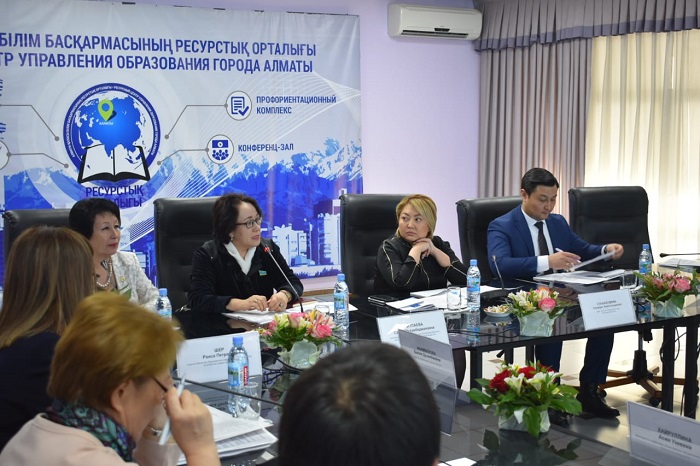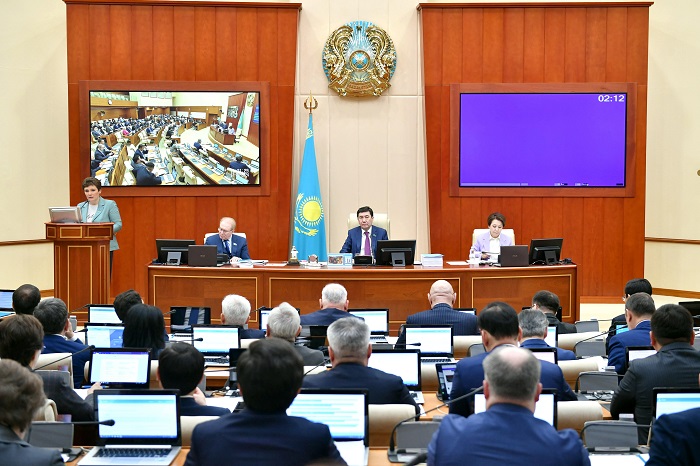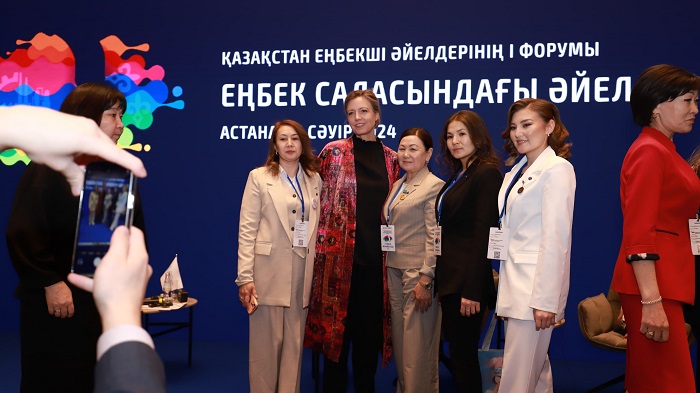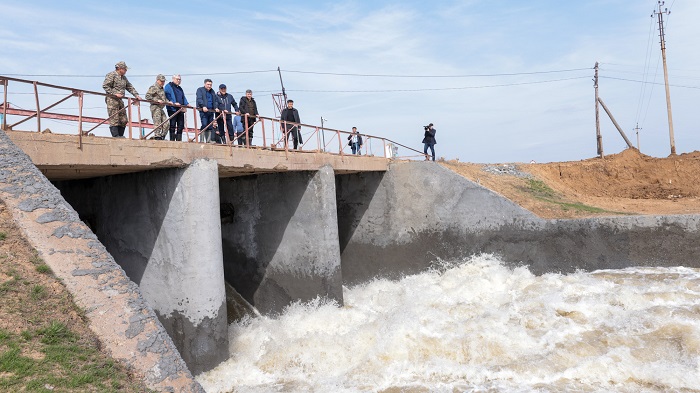Uzbekistan: financial services market in accelerating reforms Current state and prospects of development
In recent years, the volume and types of online banking services Uzbekistan through remote services and mobile applications have significantly expanded in the financial services market of our country. The processes in the domestic financial services market in the past year took place against the background of post-pandemic fluctuations in world markets, recessionary processes in financial markets and conflict situations in the world.
Monetary policy and inflation
In 2022, the Central Bank Uzbekistan continued a balanced monetary policy, taking into account the situation on world markets. If the Central Bank in the first quarter of the year, due to sharp changes in world markets, uncertainty and fluctuations in the foreign exchange market of the main trading partners, raised the main interest rate from 14% to 17%, then in the second quarter, after the fading of tensions on world markets and due to the persistence of a number of inflationary risks, it decided to reduce the main rate June 10 to 16% and July 22 to 15%.
The achievement of the 5% inflation target set in monetary policy has been postponed until the end of 2024. Due to the increased inflation risks during 2022, inflation accelerated compared to last year and reached 12.3%. However, according to surveys conducted in October by the Central Bank among business entities and the population, the average values of inflation expectations of the population, compared with last month's surveys, showed a partial decrease (from 15.2% to 15.1%) and an increase in business expectations (from 13.8% to 14, by 2%), while median values showed an increase in inflation expectations in both strata (population expectations — from 11.8% to 12.3%; business expectations - from 11.3% to 12%). In 2023, the inflation rate is projected at 9.5%.
Banking sector
In 2022, the number of credit institutions providing financial services in our country reached 190 (177 at the beginning of the year). Of these, 33 commercial banks, 157 non-bank credit organizations (77 microfinance organizations, 79 pawnshops, 1 mortgage refinancing organization). Three banks provide remote services in the form of Internet banking (TBC bank, Anor bank, Uzum bank).
As of December 1, 2022, 78% of all assets of the banking system belong to state-owned commercial banks. While in state-owned banks the ratio of credit investments to deposits was 231.4%, in other commercial banks this indicator was at the level of 80.3%. In the country, the total amount of credit investments of banks amounted to 382.1 trillion sums (an increase of 19%), compared to last year), the total volume of deposits is 216.5 trillion sums. There were positive changes in the ratio of deposits to loans (56.7%) compared to the previous period (44.7%), structurally 25.6% of loan balances accounted for individuals, 74.4% — for legal entities, the distribution of deposits was 26.7% by 73.3%. At the same time, there was an increase in the activity of individuals by 3-4% compared to last year.
As of December 1, 2022, the total number of NPLs in the general banking system loans was at mid-4% and increased to 1.7%, in line with the previous year's general credit portfolio increased to 61.3 trln. sums, but the NPL decreased to 3.1 trln. sums.
At this point, 83.4% of all credit portfolio (318.8 trln. sums) income at the bottom of 12 state banks, and other Honor (63.3 trln. sums) - at the bottom of 19 honorable banks. During the paternal period, apart from the Uzagroexport bank (95.8% below the NPLs), the reduction of the problem loans increased in all state banks. And, on the other hand, the problem of loans in honorable banks increased, in comparison with the previous period, in Trast bank (at 1.4%), Davr bank (at 0.7%), Tenge bank (at 1.3%), Anor bank (at 0.9%), Ziraat bank (at 2.7%) and Ravnaq bank (at 39.9%).
Credit investments of commercial banks reflected the following state in the context of industries: as of December 1, 2022, the volume of credit investments in the industrial sector amounted to 126.5 trillion sums (33.1% of the total volume of loans; an increase of 9.9% compared to the same period last year); in agriculture — 40.4 trillion sums (10.6%; growth of 15.7%); construction sector — 10.1 trillion sums (2.6%; growth of 6.9%); at trade and general services enterprises — 29.1 trillion sums (7.6%; growth of 7.6%); in the field of transport and communications — 28.4 trillion sums (7.4%; 0.2% growth); the volume of loans received by individuals amounted to 97.7 trillion sums (25.6%; growth 43.4%). If in 2022 the volume of loans issued to individuals increased by 43.4% compared to the previous period, then the volume of credit investments in housing and communal services decreased by 41.5%.
As of December 1, 2022, the total number of users of the remote banking service system was 29,210 (20,203 as of January 1, 2022, an increase of 45% in 11 months), of which 28,046 were individuals (19,235 thousand or 46%) and 1,164 were legal entities (968.6 or 20%). As of October 1, 2022, 46 Internet banking payment organizations (10 of which are licensed in 2022), 15 electronic money systems (5 of which are licensed in 2022) are registered in the Central Bank.
Insurance market
As of October 1, 2022, 41 insurance organizations operated in the financial services sector, 25 of them are members of the Payment Guarantee Fund. During this period insurance organizations have attracted insurance payments of 1.9 trillion sums (an increase of 137% compared to the previous period) and 4.5 trillion sums (73%) calculated as insurance premiums. Insurance payments accounted for 63% of the total amount of life insurance payments, 28% — for voluntary insurance and 9% — for compulsory insurance. For 9 months of 2022, insurance organizations have contributed 4.4 trillion sums to the economy (an increase of 22%), while 58% of investments were placed in commercial banks in the form of deposits, 29% — in the form of securities, 8% — real estate, as well as 3% — in the authorized capital of organizations and in the form of other investments.
Reforms in 2022 and plans for the future
In 2022, a number of reforms were implemented in the banking and financial sector and in the capital market. A number of changes envisaged for 2022 in the Development Strategy of the New Uzbekistan for 2022-2026 have come into force. In particular, the composition of the supervisory boards of commercial banks with a state share has been updated and the number of independent members in the supervisory board has been increased from 27 to 35 (32%); a KPI has been introduced for the management of commercial banks with a state share; the audit commission in commercial banks with a state share has been abolished; Agreements were reached and documents signed with a number of international organizations on the transformation of banks such as Asaka bank, Xalq bank and Turon bank, as well as on the development of a long-term strategy; Ipoteka bank was sold to the Hungarian commercial bank OTP bank during the privatization process.
The Development Strategy of the New Uzbekistan for 2022-2026 in the coming years in the banking and financial sector provides for:
- increasing the share of the private sector in the banking system from the current 18% to 60% and bringing the volume of the stock market to $ 7 billion;
- reduction of income tax in the banking and financial sectors from the current 20% to 15%;
- creation of a "Development Bank" for the development of industry and infrastructure in the regions;
- development and approval of "roadmaps" for the mass placement of shares of Xalq bank, Qishlok Qurilish bank, Microcredit bank, Agro bank, National Bank through the stock exchange until the end of 2023;
- development of programs for the development of modern financial services, operations and technologies, as well as non-cash payments.
The recent Address of the President of the Republic of Uzbekistan to the Oliy Majlis and the people of Uzbekistan identified a number of reforms and changes that should be implemented in the field of finance and financial services. In particular, it was announced that in 2023 about a thousand state-owned enterprises will be put up for sale. Also, 10 of the largest companies and commercial banks of the country will be put up for open primary stock trading — IPO. Such changes, in turn, will serve to accelerate real economic growth by involving the savings of the population in investment activity, improving financial literacy, and increasing working capital.
Forecast of the main indicators of macroeconomic development
Based on two scenarios, the Central Bank gave a forecast of indicators of macroeconomic development of monetary policy for 2023 and 2024-2025.
Basically, the scenarios of macroeconomic development are determined as external conditions — the continuation of the uncertainty of the geopolitical situation, the tendency to lower prices in the energy and raw materials markets, as well as the conditions of the internal environment — the continuation of structural reforms, the reduction of the role of the state in the economy, increased activity in the private sector and fiscal policy decisions.
An alternative scenario of macroeconomic development was prepared based on the likelihood of a reduction in production and aggregate supply under the influence of climate change, a decrease in external demand, a decrease in foreign exchange flows coming through various channels, against the background of increased external risks and a global recession.
The Central Bank took into account the following external conditions when making forecasts. According to the forecasts of the main scenario, the oil price in 2023 will be $80-90/barrel (under the conditions of the alternative scenario — $50-60/ barrel), high volatility of the national currencies of the main trading partners is not expected (the national currencies of the main trading partners will depreciate significantly), the price of gold is formed at about $1600-1650/an ounce ($1500-1600/an ounce). Also, in 2023, the volume of international money transfers to Uzbekistan will decrease compared to the volume of 2022, and the current account deficit of the balance of payments will amount to 4-6% (7-9%) of GDP.
According to the main (alternative) scenario of macroeconomic development indicators presented by the Central Bank, the following forecasts were made:
- annual inflation at the end of 2022 will be 12-12.5%, in 2023 — 8.5-9.5% (under an alternative scenario — 7-8%), in 2024 — 5-6% (6-7%), in 2025 — 5% (5-6%);
- real GDP growth at the end of 2022 will be 5.2-5.8%, in 2023 — 4,5-5% (3-3,5%) (according to the Ministry of Finance — 5.3%), by 2024 — 5-6% (4-4,5%), and in 2025 — 6-6.5% (4-5%);
- the growth of foreign direct investment by the end of 2022 will be 5-6%, in 2023 — 20-30% (a decrease of 15-25%), in 2024 — 20-25% (5-15%), in 2025 — 10-15% (30-35%);
- in the general fiscal balance, a deficit is projected until 2025, at the end of 2022 the deficit in relation to GDP will be at the level of 4-4.5%, by 2023 — 3-3,5% (4-4,5%), 2024 year — 2-2,5% (3,5-4%), and in 2025 — 2% (3%);
- in 2022, export growth (excluding gold) was expected at the level of 20-25%, in 2023 it is expected at the level of 13-17% (5-7%), in 2024 — 10-12% (7-9%), in 2025 — 9-10% (9-10%), and imports at the end of 2022 will be 17-20%, 2023 — 14-15% (8-10%), 2024 — 12-14% (8-9%) and 2025 — 8-10% (10-11%);
- the balance of credit investments at the end of 2022 will grow by 17-19%, in 2023 — by 15-16% (10-12%), in 2024 — by 16-17% (12-14%), in 2025 — by 14-15% (14-15%).
Jafar Khidirov,
Sunnatulla Zikrillaev,
Center for Economic Research and Reforms under the Administration of the Republic of Uzbekistan







